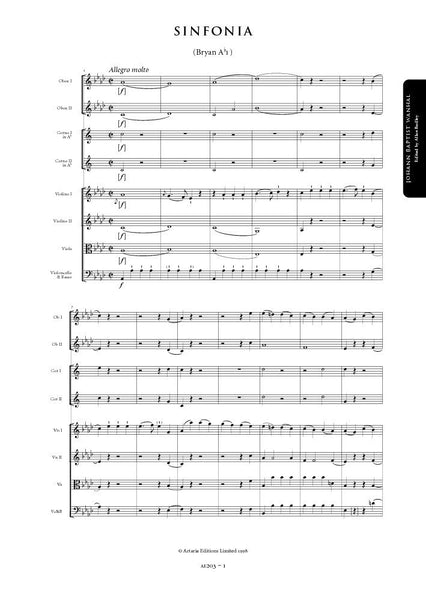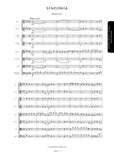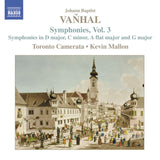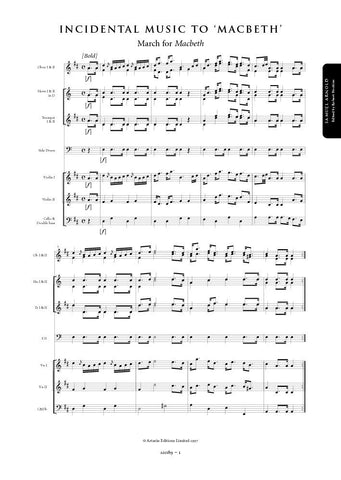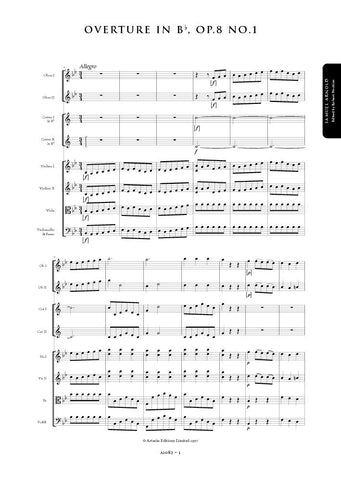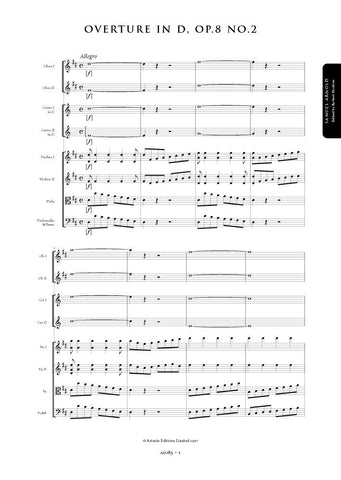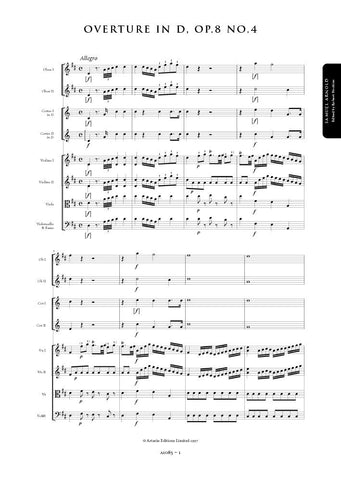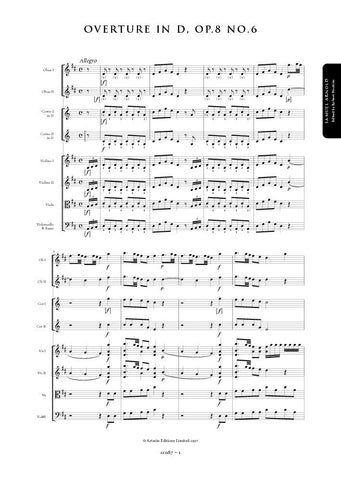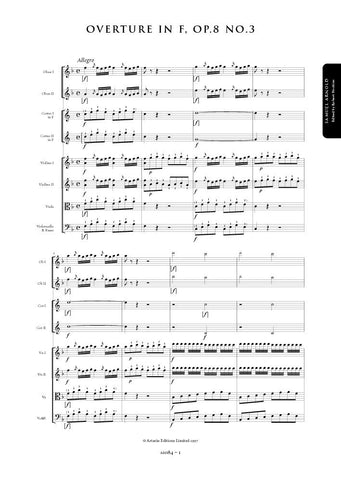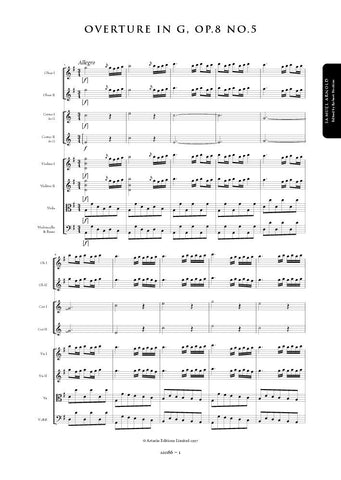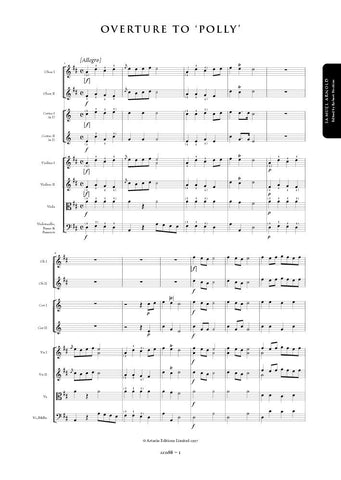Details
|
The present work, one of Wanhal's later symphonies, was probably composed in Vienna ca 1772-73. Its pedigree is well established by the five catalogues and references and the six sources (including the Clam Gallas and Thurn und Taxis collections) where sets of parts are found. It was never published. A flat 1 is unique among Wanhal's symphonies because of both its key and the use of a horn soloist in the second movement. Symphonies in the key of A flat major are seldom encountered in the 18th century. There are, for example, none by Joseph Haydn or Wolfgang Mozart. Wanhal's choice of that key might have been strictly for aesthetic reasons - the special effect (Affekt) of the key itself. It might also have been to complement the second movement which features a solo horn (in E flat) accompanied by a choir of strings con sordino, and two oboes - a lovely effect that results from the timbre of the horn combined with the swirling 16th note-dominated, gossamer sound of the muted strings. The horn part is carefully written. It is confined to the notes available on the natural horn without hand-stopping and is less demanding than the second movements of the horn concertos by Wolfgang Mozart and Joseph Haydn, but it requires a player with flexibility and the ability to traverse the range from c1 to c3. One might suppose that it would be playable by the average first hornist who would be encountered in the normal Viennese orchestra - i.e., not a virtuoso. It would be interesting to know for whom this symphony was written; and who was the horn player entrusted to perform the lyric second movement.
By the time Wanhal composed Ab1 he had already written more than 50 symphonies. It is a serious work, the product of a mature composer whose concept of what a symphony should be was well established in his mind. Each of its four movements has full-blown proportions: the first and final movements are in sonata form and have three lengthy themes. The second movement is a song-form sonata with exposition, a mid section of 17 bars with a new thematic idea mostly in E flat minor, and a recapitulation. It could easily be the second movement of a horn concerto. The Minuetto and Trio's attractive melodic lines feature unusual phrase lengths created by various techniques of phrase extension including dialoguing between the strings and the four-voiced wind choir in the Trio. The extended tempo indications on the movements: e.g., the second movement is not simply Adagio but Adagio molto cantabile, and Minuetto I is qualified with 'ma un poco allegro' is a typical way whereby Wanhal sought to control performances of his later symphonies.
Wanhal's process of construction, whereby each movement derives from a simple rhythmic motive at the outset can easily be seen. The first movement, for example, is basically derived from the rhythm and contour of the motivic material presented in the first two bars. It reappears at the second thematic area, although it does not continue in the same way as the opening theme, and it is the prime component of the development section. Only the third theme which begins in bar 60 of the exposition is free of its influence. In the finale the opening motivic-figure contains a simple unit of two 8th notes that serves its own function, e.g. in bars 17-18. It is Wanhal's symphonic process at work.
This edition is based on a set of parts from the collection of Count Clam Gallas which is considered to be one of the most reliable sources, one with which Wanhal probably maintained direct connections. The performance material was prepared by Viennese copyists - a sign that, even though the autograph is lacking, their source was the closest possible to Wanhal who would normally have provided his scores to them for copying. The parts are now preserved in the Narodn Muzeum Prague under the shelfmark Clam Gallas XLII E 352. The wrapper reads: G. Clam Gallas / No.34 / Sinfonia in A mol. / a / 2. Violini / Viola / 2. Oboe / 2. Corni / e / Basso / Del Sig. Giov: Battista Wanhal.
In the absence of both the autograph score and an authentic set of parts, the edition presents as faithfully as possible the intentions of the composer as transmitted in the old Clam Gallas parts. The style and notation of articulation and dynamic markings have been standardised throughout and, where missing from the source, markings have been reconstructed from parallel passages. These are indicated by the use of dotted slurs or brackets. Like most eighteenth century sources, the present manuscript is inconsistent at times in its notation of appoggiature; these too have been standardised to minimise confusion. Obvious wrong notes have been corrected without comment; editorial emendations with no authority from the source are placed within brackets.
Paul Bryan
Allan Badley
|




